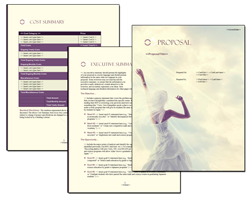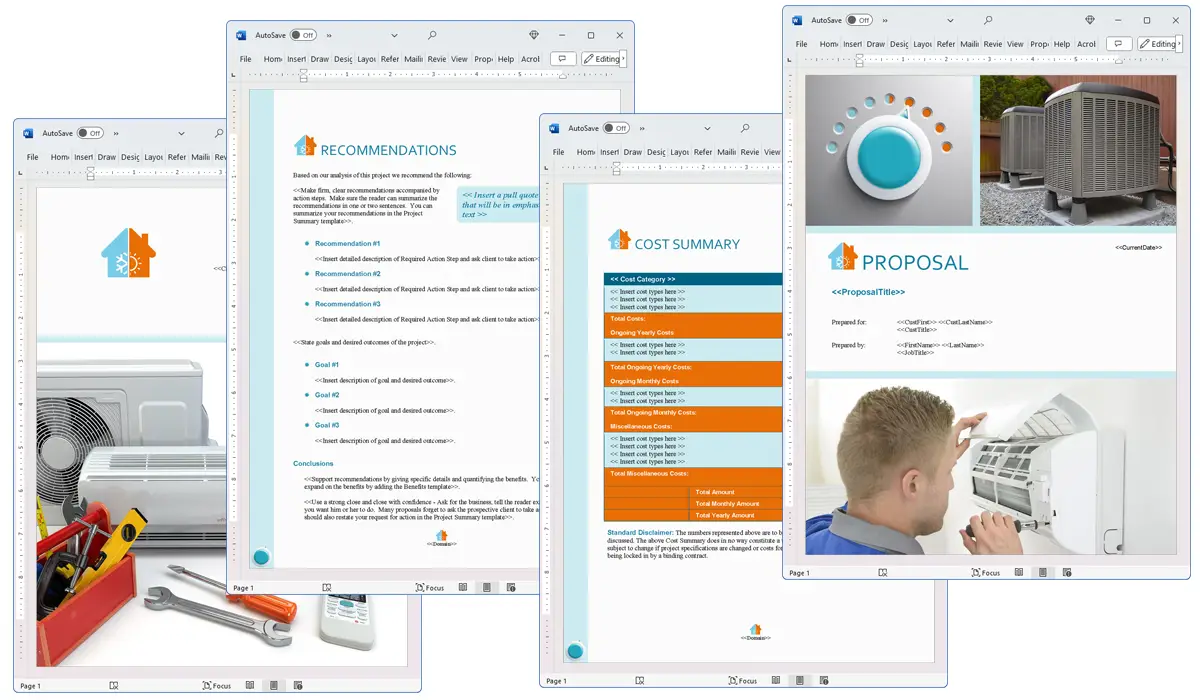What is the Reverse Engineering chapter used for?
Proposal Kit Professional Bundle adds more design themes, all six Contract Packs,
a project management library, and Expert Edition software.

Illustration of Proposal Pack Wireless #4
We include this Reverse Engineering chapter template in every Proposal Pack, along with thousands more. You assemble this chapter with others in various combinations to create custom-tailored business proposals, plans, reports, and other documents. Proposal Packs apply custom visual designs to the templates, giving the final documents a consistent professional finish.
 DOWNLOADABLE, ONE-TIME COST, NO SUBSCRIPTION FEES
DOWNLOADABLE, ONE-TIME COST, NO SUBSCRIPTION FEES
Overview of the Reverse Engineering Chapter
The Reverse Engineering chapter is an important component in proposal documentation especially when the objective involves understanding and possibly replicating a product's operation without starting from the beginning. In business, this approach can save considerable time and resources, providing a advantage. This chapter helps outline the methodology, goals, and justification for choosing reverse engineering as a preferred approach in a proposal.
How is the Reverse Engineering Chapter Used?
In a business proposal, the Reverse Engineering chapter is used to clearly define the process of analyzing a product to understand its components, functionality, and operational backbone. This chapter is crucial for setting the stage for stakeholders to appreciate the complexity and necessity of disassembling or studying a product to innovate or improve upon it. It serves to align the project's objectives with practical methodologies, ensuring that all parties involved have a clear understanding of the project's scope and the rationale behind it.
What is Included in the Reverse Engineering Chapter?
Typically, this chapter includes:
- An introduction to the concept of reverse engineering.
- Detailed objectives of the reverse engineering process.
- A step-by-step plan on how the product will be studied or deconstructed.
- An explanation of the tools and resources required to carry out the process.
- Risk assessment associated with reverse engineering the product.
- Expected outcomes and benefits of understanding the product's design and functionality.
This structured format ensures that all critical aspects of reverse engineering are covered comprehensively.
Use Case Examples for the Reverse Engineering Chapter
The Reverse Engineering chapter can be in a variety of settings:
- Web and Software: Proposals aiming to understand and improve upon existing web platforms or software applications.
- IT and Hardware: Proposals focused on deconstructing and enhancing hardware devices or IT infrastructure.
- Technical Fields: Applied in situations where a deep comprehension of a technical product or system is necessary.
- Patents and Inventions: Important for proposals that require a detailed analysis of patented products or new inventions to create derivative works or enhancements.
- Technical Documentation: Useful in creating detailed technical documentation based on existing successful products.
These use cases show the versatility of the Reverse Engineering chapter across different industries and objectives.
Key Takeaways
- The Reverse Engineering chapter is vital for proposals that involve understanding and potentially replicating existing products.
- It outlines the methodology and justification for disassembling or studying a product in detail.
- Includes comprehensive elements like objectives, methodologies, tools, risks, and expected outcomes.
- Applicable in a variety of fields including software, IT, hardware, patents, and technical documentation.
- Helps in saving time and resources by building upon existing designs rather than starting from scratch.

Illustration of Proposal Pack Wedding #5
 What Our Clients Say
What Our Clients SayProposal Packs are a great way to enhance an already powerful product. It adds a layer of flexibility unmatched by any other software I have found."
DJF Consulting LLC
 4.7 stars, based on 845 reviews
4.7 stars, based on 845 reviewsRelated Chapters

The Reverse Engineering chapter and other chapters are integrated into a Word document as illustrated here in the Proposal Pack HVAC #2 design theme. There are hundreds of design themes available, and every design theme includes the Reverse Engineering chapter template.
A proper business proposal will include multiple chapters. This chapter is just one of many you can build into your proposal. We include the complete fill-in-the-blank template in our Proposal Pack template collections. We also include a library of sample proposals illustrating how companies in different industries, both large and small, have written proposals using our Proposal Packs. This template will show you how to write the Reverse Engineering.
We include a chapter library for you to build from based on your needs. All proposals are different and have different needs and goals. Pick the chapters from our collection and organize them as needed for your proposal.
Using the Proposal Pack template library, you can create any business proposal, report, study, plan, or document.
 Ian Lauder has been helping businesses write their proposals and contracts for two decades. Ian is the owner and founder of Proposal Kit, one of the original sources of business proposal and contract software products started in 1997.
Ian Lauder has been helping businesses write their proposals and contracts for two decades. Ian is the owner and founder of Proposal Kit, one of the original sources of business proposal and contract software products started in 1997.By Ian Lauder
 Published by Proposal Kit, Inc.
Published by Proposal Kit, Inc.


 Cart
Cart
 Facebook
Facebook YouTube
YouTube X
X Search Site
Search Site